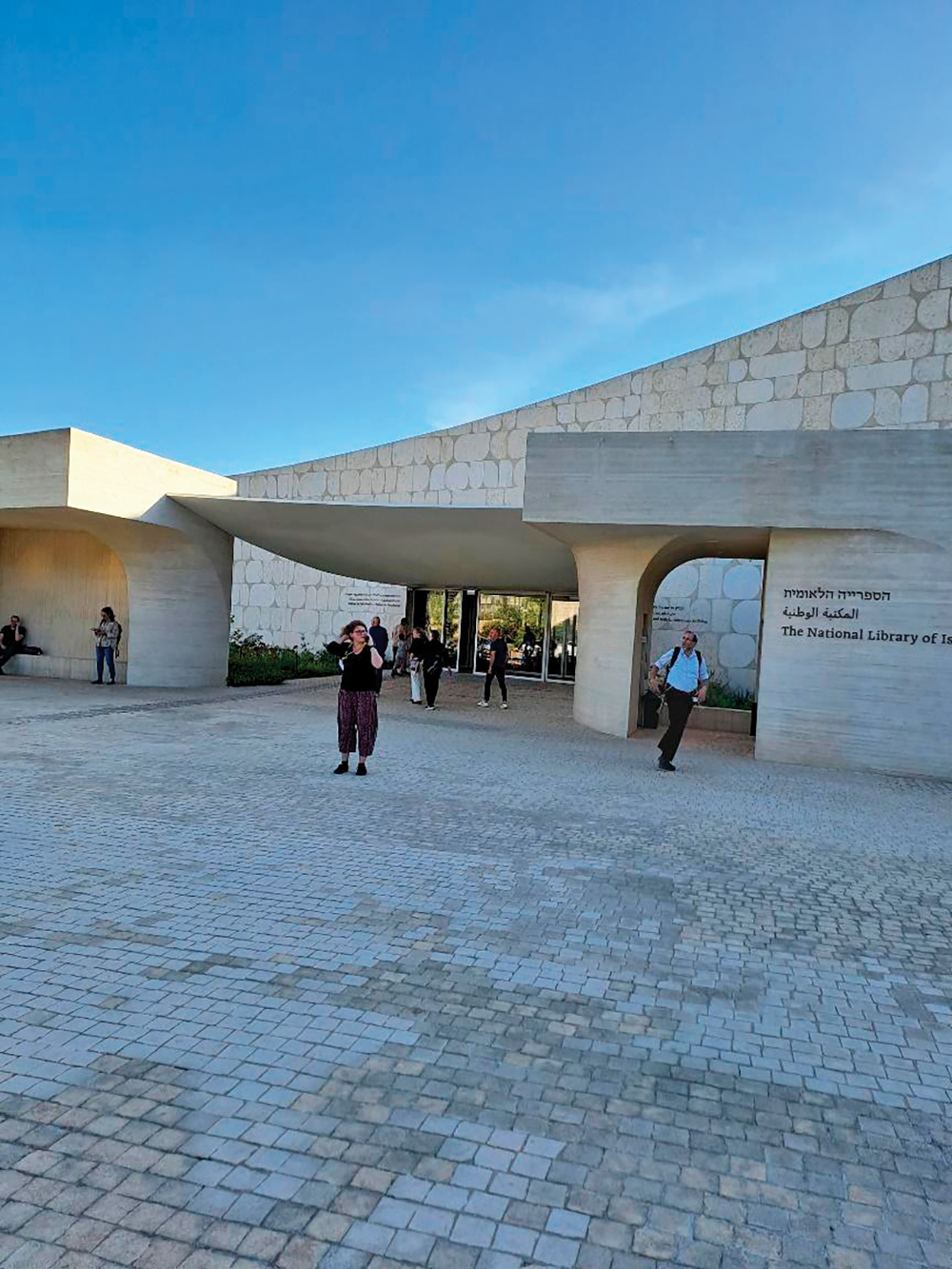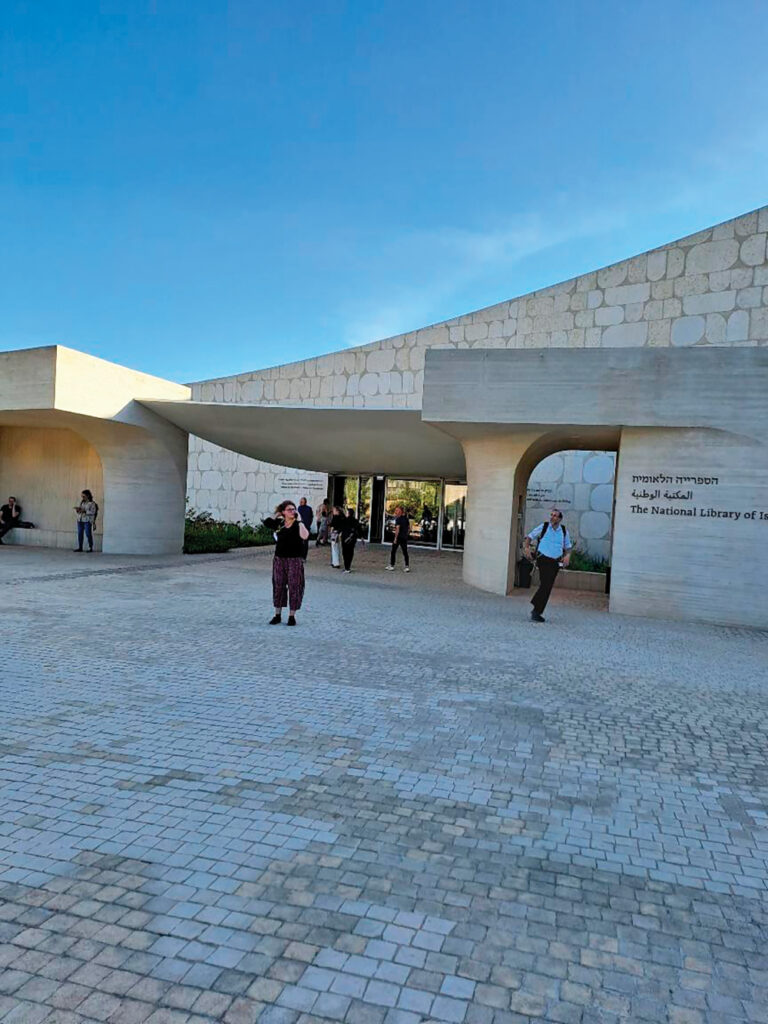
(Much of the information for this article was derived from a tour of the National Library for guides of the Western Wall Heritage Foundation.)
The Jewish people are known as “The People of the Book.” Our commitment and adherence to our precious Torah throughout our years of exile has preserved and sustained us.
Israel’s National Library has just moved to a new building opposite the Knesset. Let’s learn a bit about the history of the national library and the symbolism of its new structure, and explore some of the treasures it displays inside.
The National Library was founded 132 years ago, long before the founding of the State of Israel, by the Chovevei Tzion movement. It was then called the Abarbanel Library since it was inaugurated exactly 400 years after the Jews were expelled from Spain. Until recently the library was on the Hebrew University Campus in Givat Ram where it stood for many years. Just this year the library moved to its own building on Kaplan Street.
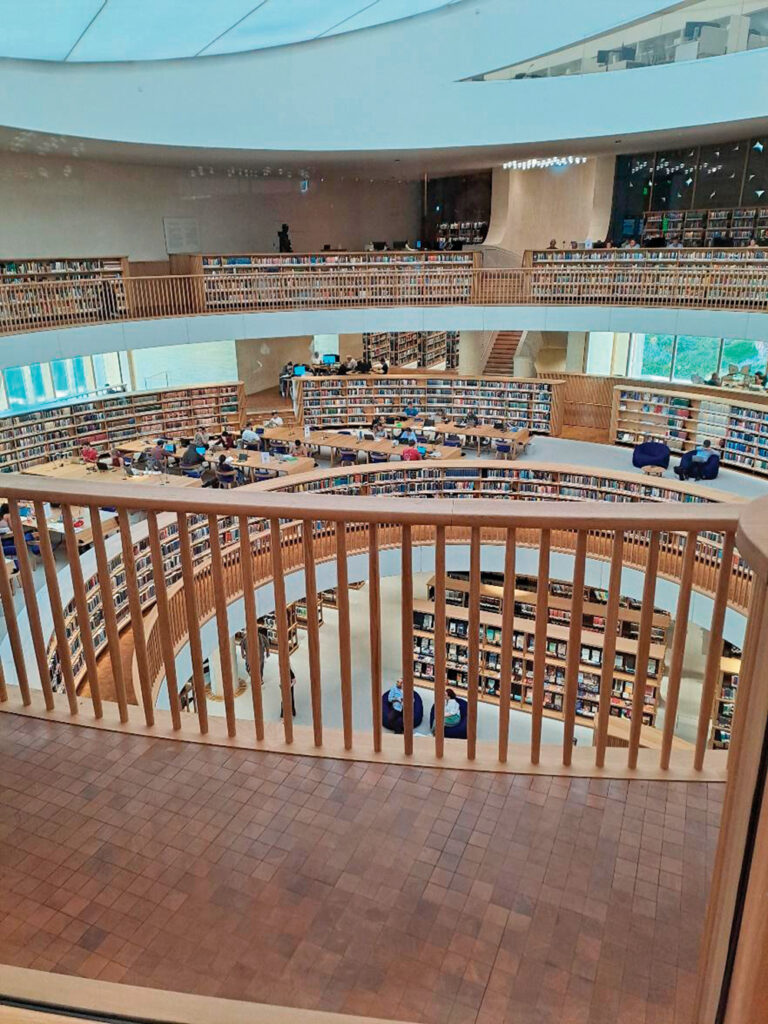
The architecture of the new building is a topic in and of itself. The building was designed by Swedish architects and is similar to national libraries around the world. The postmodern style of the building holds a lot of symbolism. From afar the roof of the library looks like an open book, albeit asymmetrical. The stones in the façade of the building are meant to be reminiscent of the Western Wall stones. There are even spaces of cement between the stones, which are supposed to evoke the image of the cracks of the Western Wall where people place notes. The shape of the windows is reminiscent of letters. The shapes of the stones in the wall repeat themselves, similar to the figures of letters on a page.
The entrance to the library is meant to look like a chuppah. It’s also low-down and inviting. The building itself houses many stories but they are mostly below ground so that the building looks warm and inviting, not towering and intimidating. Surrounding the entrance is a postmodern version of lions guarding an entrance. (I’ll be honest, it’s hard to tell, but that was the architect’s intention.)
Once inside the building, we can peer into a large, spiral hall that contains three floors of books. This is the reading hall, where absolute silence is maintained. It houses 250,000 books on low bookshelves that are easily accessible to the reader. The spiral shape of the hall is reminiscent of a large well, symbolizing the well of knowledge. The bottom floor is brown, symbolizing the earth. The skylight on top illuminates the room. Symbolically, this is the connection between heaven and earth.
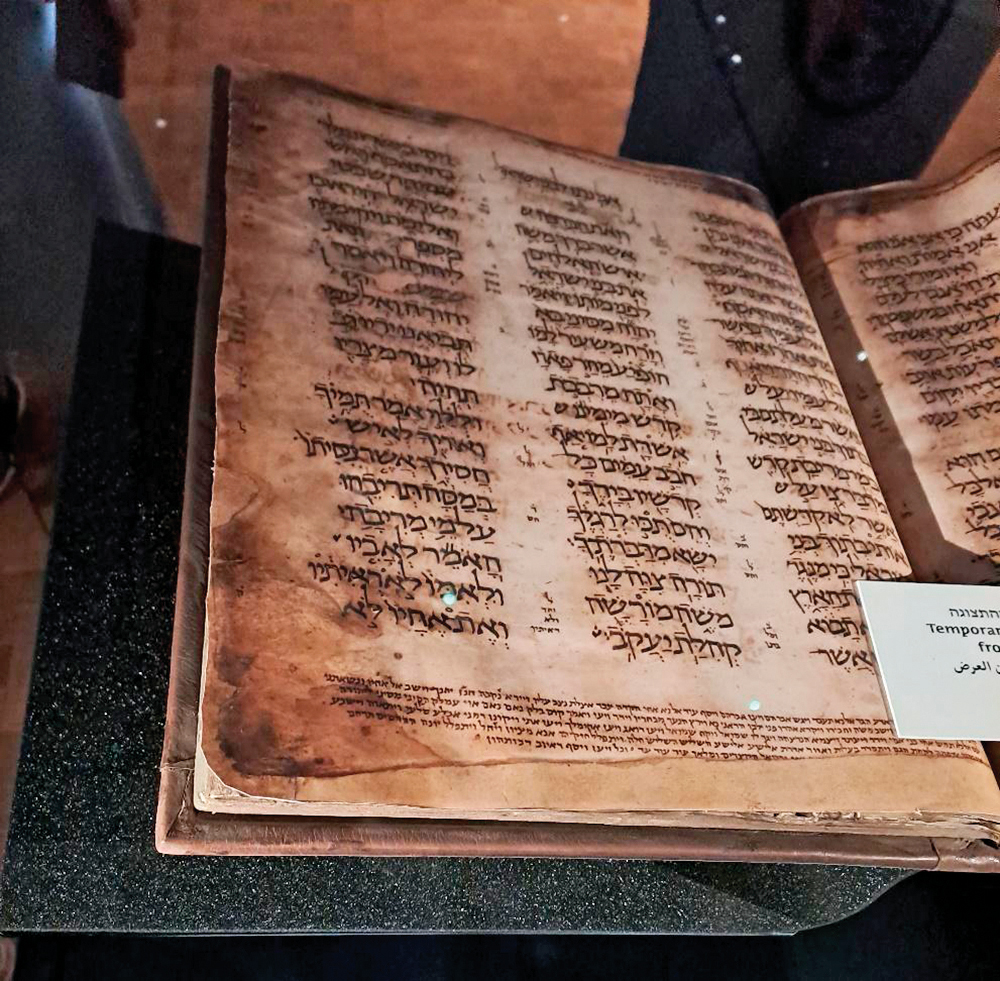
What if you want to read a book that is not in the reading hall? You can order from the archives where a robotic device will find the book and deliver it to the main hall within an hour. The library houses a total of 4,500,000 books as well as periodicals and other documents!
The library is not only a place to go for professors conducting research. Its permanent and rotating displays exhibit beautiful and monumental collections of the written word throughout the ages. Someone visiting the permanent display enters a large, dimmed hall where they can see original written treasures of historical significance.
The Keter Chumash on display was written in the 10th century in Damascus. In the 1980s, a mission of the Mossad brought ancient Jewish manuscripts from Syria to Israel. Some of these books had to be taken apart and smuggled into Israel one page at a time. This is part of that precious collection!
Also on display is an original edition of the Talmud Bavli published in Venice in the 16th century by Daniel Bomberg. This edition, with the original צורת הדף, is so well-preserved because it was kept in a monastery for many years.
There is also a display of Haggadot that spans the centuries and Jewish communities throughout the world. The illustrations and variations of the Haggadot teach about the community that used it.
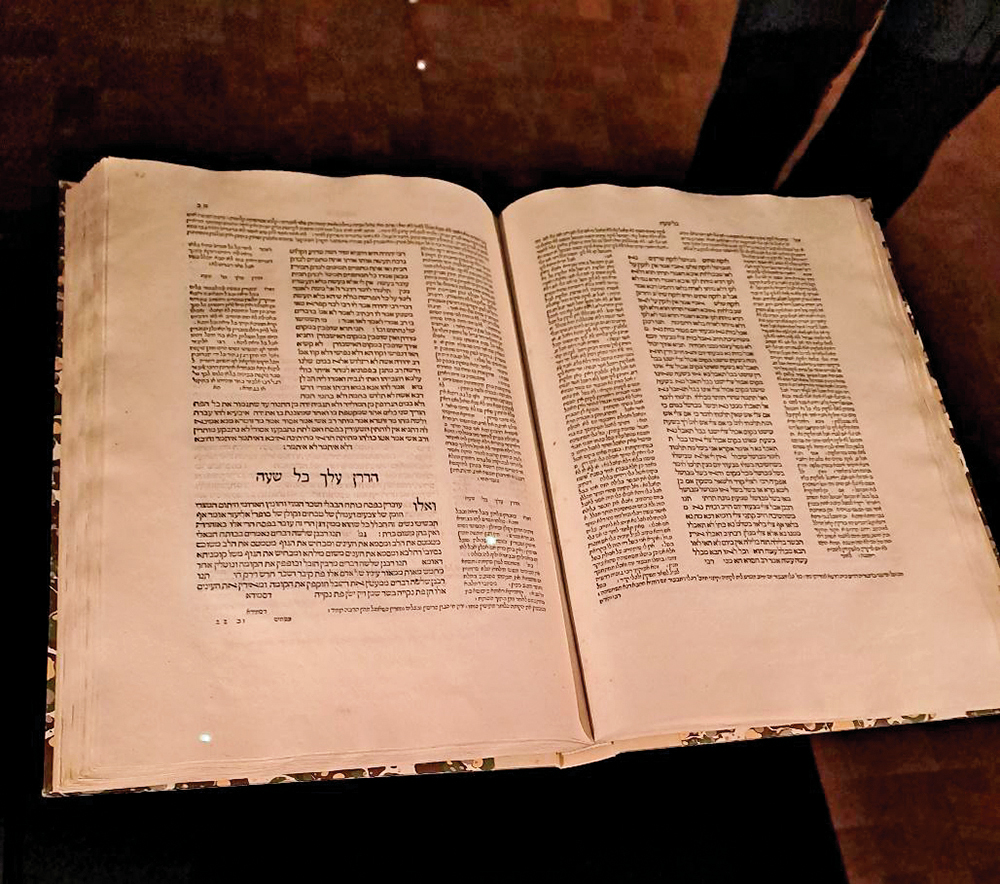
One can also view original letters written by well-known thinkers spanning the gamut of the Jewish world in modern times. In the same section one can see original letters in the handwriting of the Chazon Ish, Naomi Shemer and many others.
The oldest written items on display are 1,400-year-old ceramic bowls inscribed with text in Aramaic. These bowls, found in present day Iraq (ancient Bavel), contain a combination of pesukim from Tanach and other texts. They were buried under the threshold of doors and were believed to ward off demons.
A visit to the display hall in Israel’s new National Library can help us to appreciate how our people have studied and treasured our Torah throughout our long exile. May it end speedily in our days!
Hava Preil is an enthusiastic licensed Israeli tour guide. She grew up on the Upper West Side of Manhattan and holds an MA in Judaic studies. Hava has developed and taught accredited courses in Tanach and Jewish ethics for Naaleh/Woodmont College and Cybersem. She currently lives in Givat Ze’ev, Israel with her family. Hava can be reached at IL: 054-844-1579, USA: 845-391-0438 or at [email protected]. Visit her new website “Home—Hava Preil Tours,” havapreiltours.com. Reach out to learn about various one-day group tours for summer 2024.


